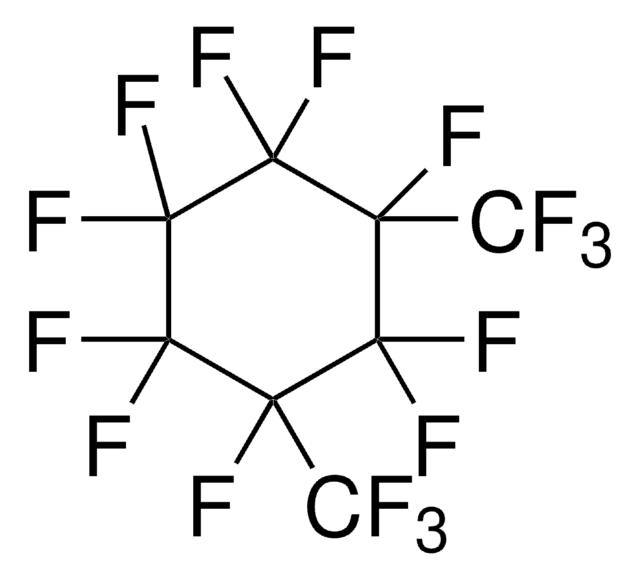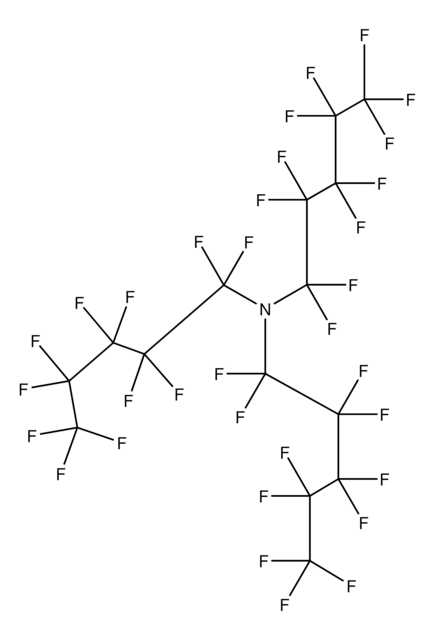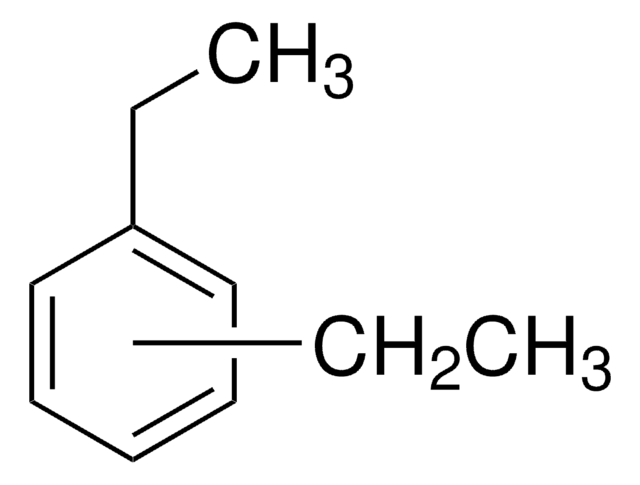302937
Perfluor(methylcyclohexan)
technical grade, 90%
Synonym(e):
(Trifluormethyl)-undecafluor-cyclohexan, Perfluormethylcyclohexan
About This Item
Empfohlene Produkte
Qualität
technical grade
Qualitätsniveau
Assay
90%
Form
liquid
Brechungsindex
n17/D 1.285 (lit.)
bp
76 °C (lit.)
Dichte
1.787 g/mL at 25 °C (lit.)
Funktionelle Gruppe
fluoro
SMILES String
FC(F)(F)C1(F)C(F)(F)C(F)(F)C(F)(F)C(F)(F)C1(F)F
InChI
1S/C7F14/c8-1(7(19,20)21)2(9,10)4(13,14)6(17,18)5(15,16)3(1,11)12
InChIKey
QIROQPWSJUXOJC-UHFFFAOYSA-N
Suchen Sie nach ähnlichen Produkten? Aufrufen Leitfaden zum Produktvergleich
Allgemeine Beschreibung
Anwendung
- A reactant to synthesize perfluoro-2-methylcyclohex-1-enolate by photochemical reaction with tetrabutylammonium iodide in water.
- A fluorous solvent to synthesize polynorbornene via ring-opening metathesis polymerization (ROMP) of norbornene using fluorous Grubbs′ second-generation catalyst.
It can also be used as a solvent to investigate fluorophilicity of a series of hydrocarbon and fluorocarbon-functionalized nicotinic acid esters.
Lagerklassenschlüssel
10 - Combustible liquids
WGK
WGK 3
Flammpunkt (°F)
Not applicable
Flammpunkt (°C)
Not applicable
Persönliche Schutzausrüstung
Eyeshields, Gloves
Hier finden Sie alle aktuellen Versionen:
Besitzen Sie dieses Produkt bereits?
In der Dokumentenbibliothek finden Sie die Dokumentation zu den Produkten, die Sie kürzlich erworben haben.
Kunden haben sich ebenfalls angesehen
Unser Team von Wissenschaftlern verfügt über Erfahrung in allen Forschungsbereichen einschließlich Life Science, Materialwissenschaften, chemischer Synthese, Chromatographie, Analytik und vielen mehr..
Setzen Sie sich mit dem technischen Dienst in Verbindung.









![Poly[4,5-difluor-2,2-bis(trifluormethyl)-1,3-dioxol-co-tetrafluorethylen] dioxole 87 mol %](/deepweb/assets/sigmaaldrich/product/structures/951/320/21327fcd-4960-402d-8ae1-bf2e379cb2e2/640/21327fcd-4960-402d-8ae1-bf2e379cb2e2.png)